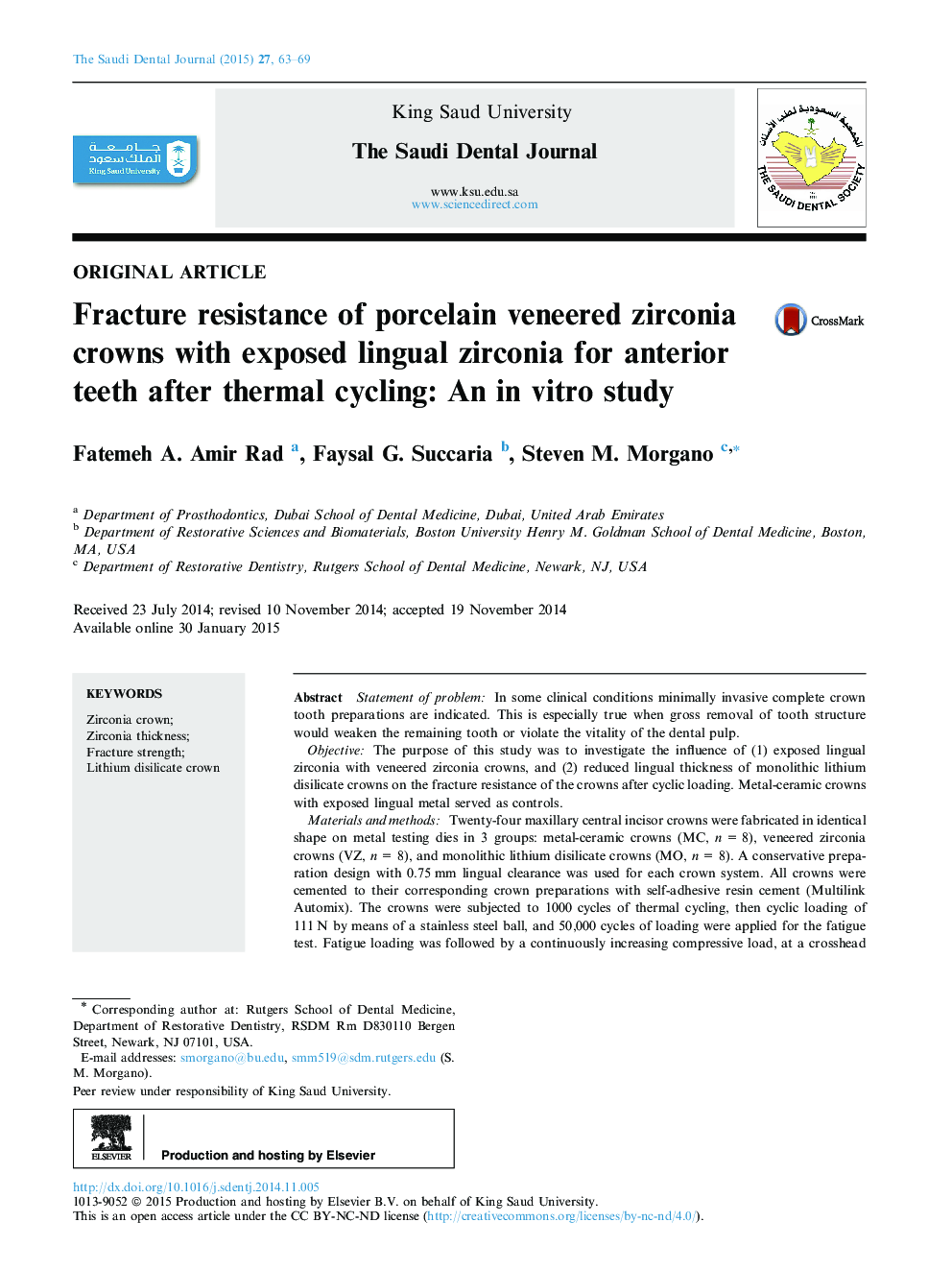| کد مقاله | کد نشریه | سال انتشار | مقاله انگلیسی | نسخه تمام متن |
|---|---|---|---|---|
| 2686225 | 1142942 | 2015 | 7 صفحه PDF | دانلود رایگان |
Statement of problemIn some clinical conditions minimally invasive complete crown tooth preparations are indicated. This is especially true when gross removal of tooth structure would weaken the remaining tooth or violate the vitality of the dental pulp.ObjectiveThe purpose of this study was to investigate the influence of (1) exposed lingual zirconia with veneered zirconia crowns, and (2) reduced lingual thickness of monolithic lithium disilicate crowns on the fracture resistance of the crowns after cyclic loading. Metal-ceramic crowns with exposed lingual metal served as controls.Materials and methodsTwenty-four maxillary central incisor crowns were fabricated in identical shape on metal testing dies in 3 groups: metal-ceramic crowns (MC, n = 8), veneered zirconia crowns (VZ, n = 8), and monolithic lithium disilicate crowns (MO, n = 8). A conservative preparation design with 0.75 mm lingual clearance was used for each crown system. All crowns were cemented to their corresponding crown preparations with self-adhesive resin cement (Multilink Automix). The crowns were subjected to 1000 cycles of thermal cycling, then cyclic loading of 111 N by means of a stainless steel ball, and 50,000 cycles of loading were applied for the fatigue test. Fatigue loading was followed by a continuously increasing compressive load, at a crosshead speed of 1 mm/min until failure. The compressive load (N) required to cause failure was recorded. Means were calculated and analyzed with one-way ANOVA and the Tukey HSD test (α = .05).ResultsThere was a significant difference between MO vs. MC (P = .0001), MO vs. VZ (P = .0001), and VZ vs. MC (P = .012).ConclusionsThere was a significant difference in the mean fracture resistance of MC, VZ, and MO crowns in this in vitro study. The MC group recorded the highest mean fracture strength.
Journal: The Saudi Dental Journal - Volume 27, Issue 2, April 2015, Pages 63–69
